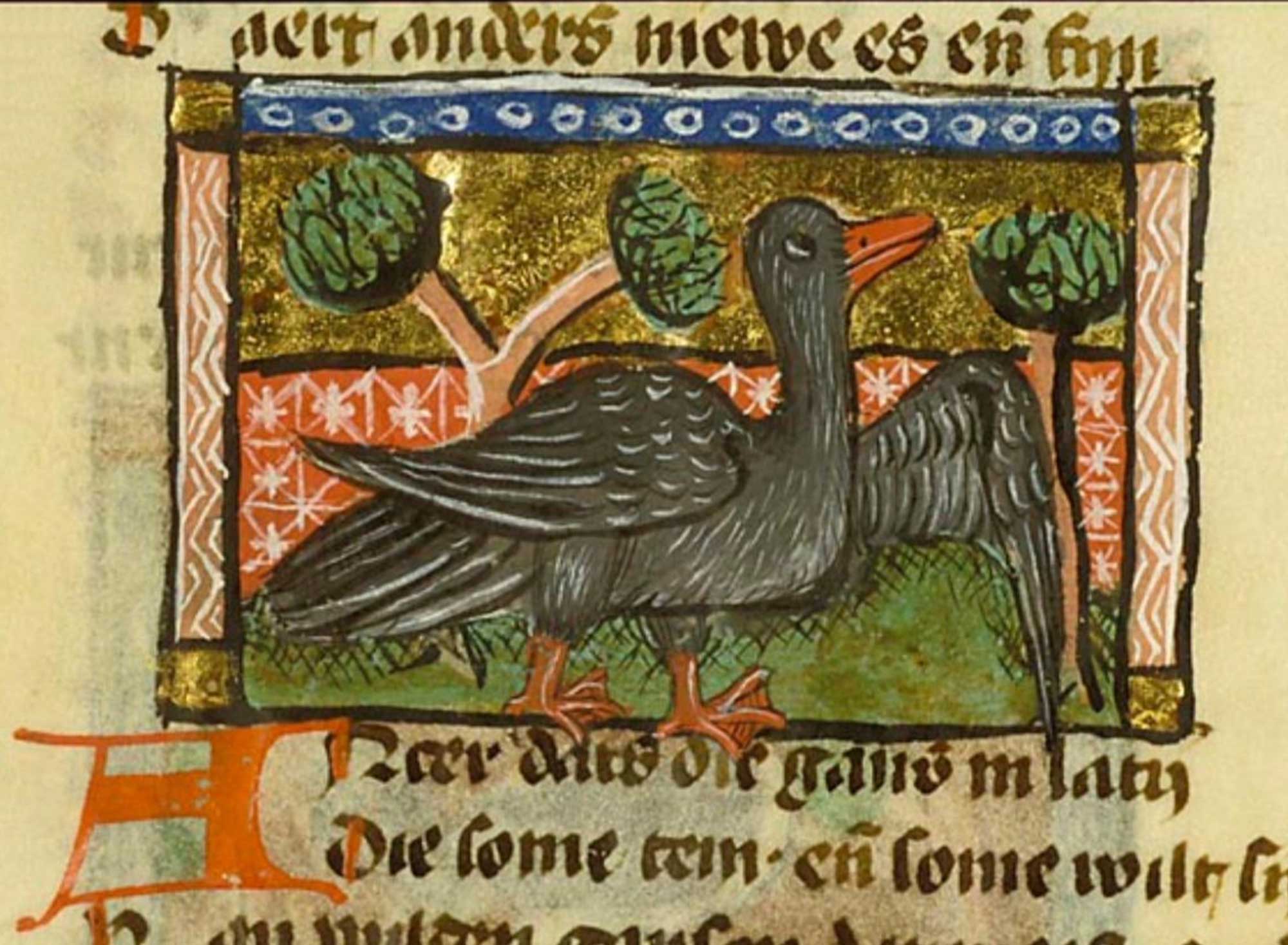Among the examples of pairings whose antipathies are not as vehement as the hatred thieves have of a certain usage of Pantagruelion.
Notes
Ancer (goose)

173. Ancer (goose)
[Ancer is Latin for “goose”.]
la Cigue aux Oiſons
urtica contactu mortifera, nec minus aviditas, nunc satietate nimia, nunc suamet vi, quando adprehensa radice morsu saepe conantes avellere ante colla sua abrumpunt. contra urticam remedium est stramento ab incubitu subdita radix earum.
The touch of a nettle is fatal to goslings, and not less so is their greediness, sometimes owing to their excessive gorging and sometimes owing to their own violence, when they have caught hold of a root in their beak and in their repeated attempts to tear it off break their own necks before they succeed. A nettle-root put under their straw after they have lain in it is a cure for nettle-sting.
la Cigue aux Oiſons:
Nyctegreton inter pauca miratus est Democritus, coloris hysgini, folio spinae, nec a terra se adtollentem. praecipuam in Gedrosia narrat erui post aequinoctium vernum radicitus siccarique ad lunam xxx diebus, ita lucere noctibus. Magos Parthorumque reges hac herba uti ad vota suscipienda. eandem vocari chenamychen, quoniam anseres a primo conspectu eius expavescant, ab aliis nyctalopa, quoniam e longinquo noctibus fulgeat.
Nyctegreton [“Night-watcher”] was one of a few plants chosen for special admiration by Democritus; it is of a dark-red colour, with a leaf like a thorn, and not rising high from the ground; a special kind grows in Gedrosia. He reports that it is pulled up by the roots after the spring equinox and dried in the moonlight for thirty days; that after this it glows at night, and that the Magi and the kings of Parthia use the plant to make their vows. It is also called, he says, chenamyche [Because it made geese (χῆνες) run in panic into a corner (μύχος)], because geese are panic-stricken at the first sight of it, and by others nyctalops, because it gleams a long distance by night.
Hemlock to Goslings
Pliny makes Nettles (x. 59, § 79) and Nyetegretum (xxi. 11, § 36) poisonous to goslings, but says nothing about hemlock in that connexion.
la cigue aux oisons
Rabelais a mal lu: c’est l’ortie que Pline (X, 79) accuse de nuire aux oisons: «Pullis eorum [anserum] urtica contactu mortifera». Au reste, la ciguë ne leur serait pas moins pernicieuse. (Paul Delaunay)
Nenuphar…
Encore une fois, la plupart de ces exemples se retrouvent dans le De latinis nominibus de Charles Estienne. Le nenufar et la semence de saule sont des antiaphrodisiaques. La ferula servait, dans l’Antiquité, à fustiger les écoliers (cf. Martial, X, 62-10).
la Cigue
En fait, l’ortie (Pline, X, lxxix)